Incredible treasures rescued from the Titanic
Astonishing items from the doomed ship
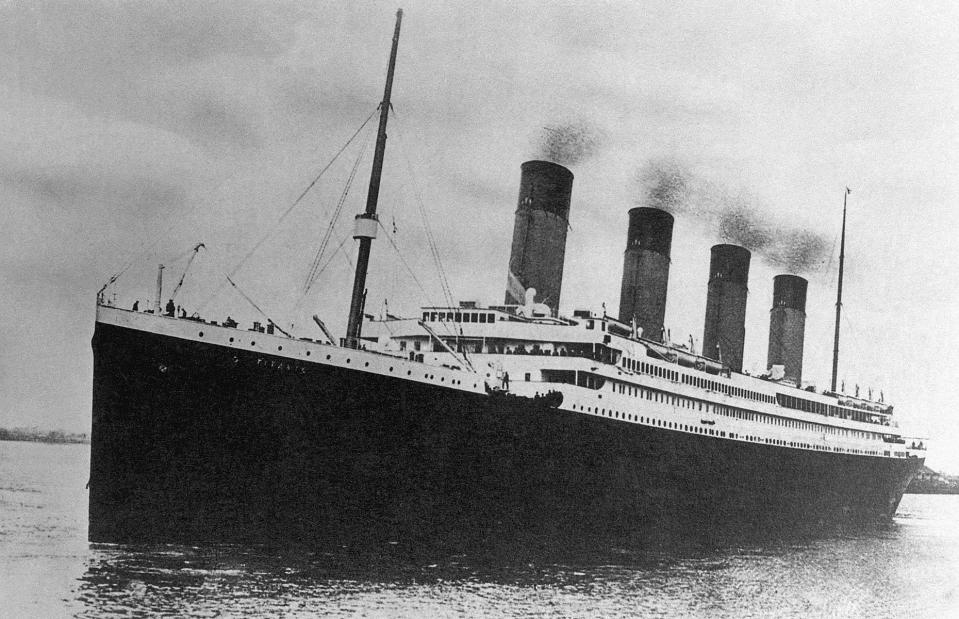
Bettmann/Contributor/Getty Images
Arguably the most famous shipwreck of all time, the ill-fated Titanic collided with an iceberg in the late hours of 14 April 1912. The disaster claimed the lives of some 1,500 of its 2,240 passengers.
Over the years, treasures telling the story of those passengers – both those who survived and those who tragically lost their lives – have been recovered. Read on to discover some of the most spectacular and valuable pieces from the tragic ship, including a pocket watch that's just broken auction records.
All dollar values in US dollars and currency conversions are correct at the time of sale.
First-class menu: $102,000 (£83k)
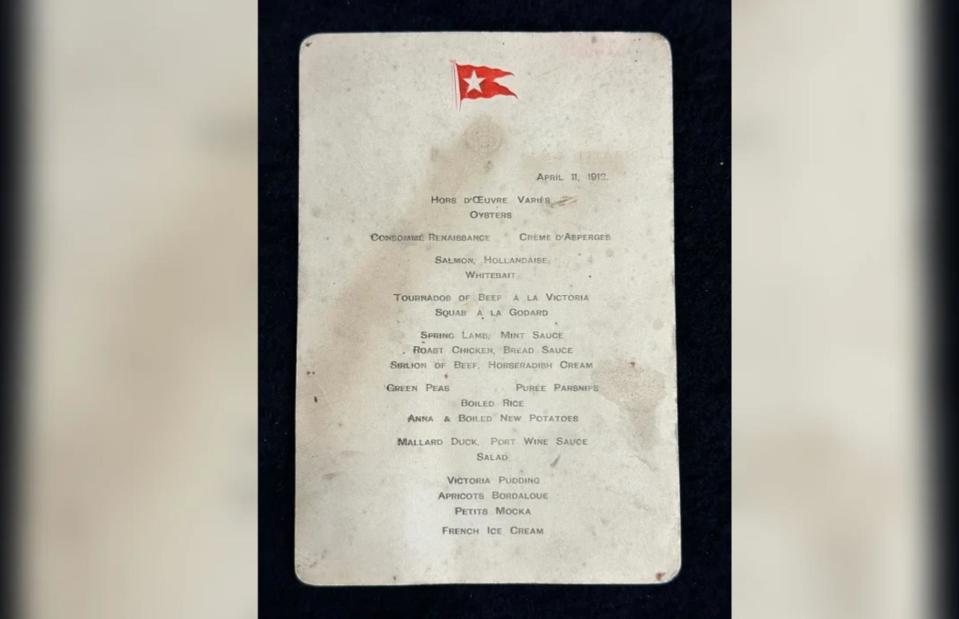
Courtesy Henry Aldridge and Son Ltd
Water stains usually make an item less desirable on the auction block – but for this first-class menu, they tell a chilling tale. According to London auction house Henry Aldridge and Son Ltd, this menu likely spent time in the Atlantic Ocean before being salvaged and is the only copy from the night of 11 April 1912 that's known to have survived.
The menu reveals first-class passengers would have enjoyed oysters, a choice of lamb, chicken or beef, and apricot tart. It was discovered in a 1960s photo album belonging to a historian in Nova Scotia, Canada, and went up for auction on 11 November 2023, selling for £83,000 ($102k).
Doll’s head: $7,900 (£5.8k)
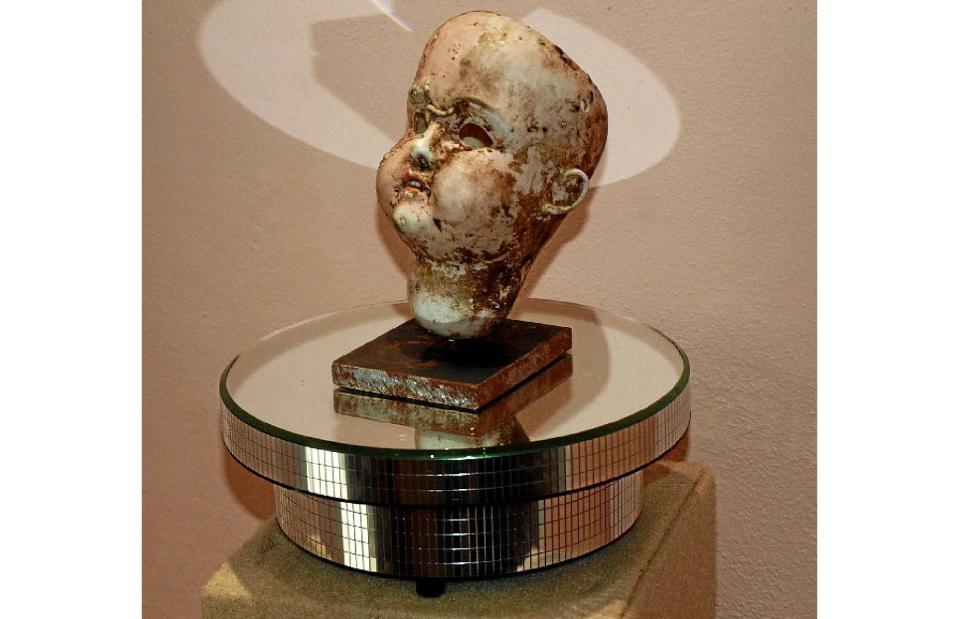
Courtesy CataWiki
This disturbing doll’s head was rescued from the floor of the Atlantic Ocean in 1977. Dragged up from a depth of 6,561 feet (2,000m), the porcelain figure was first thought to be a rock, but once its finder realised it was a doll’s head, he treasured it until his death in 1992.
The porcelain head is the exact shape of the Shoenau & Hoffmeister 1906 mould, and this uncommon doll is known to have been on board the Titanic. After spending years in a museum in Spain, the head finally sold for €6,500 ($7.9k/£5.8k) through auction site Catawiki in 2018.
First-class carpet: $18,750 (£11.8k)
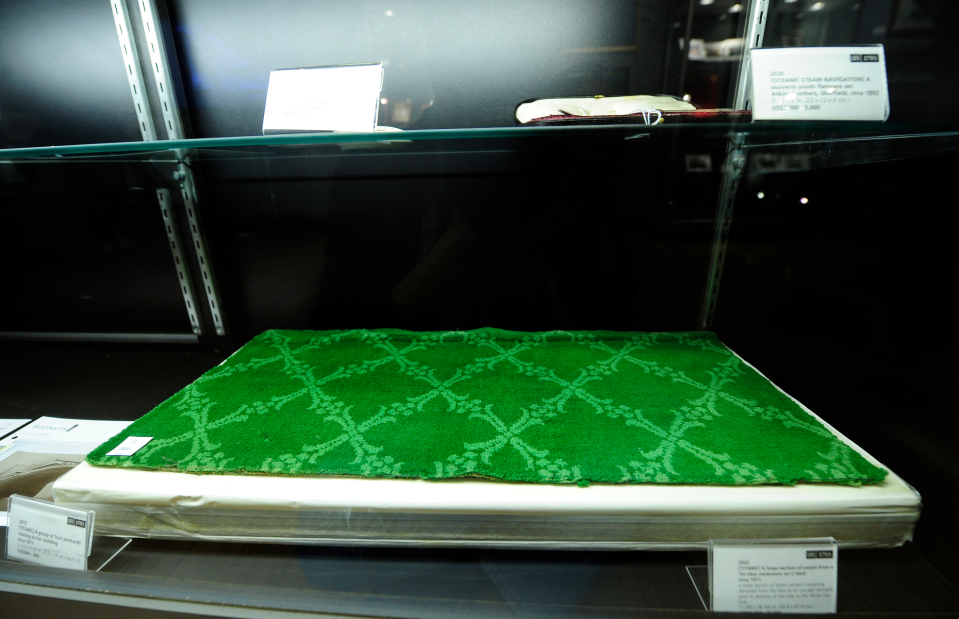
EMMANUEL DUNAND/Staff/Getty Images
This piece of carpet never actually set sail on the Titanic, as a first-class steward removed several pieces of discarded carpet from the ship before it was delivered to Southampton. But numerous unused remnants of the ship were placed in storage and later distributed to survivors of the disaster and museums.
This particular rectangle of carpet, measuring 11.75 by 26.75 inches (29.8cm by 67.9cm), had been part of the flooring of a first-class stateroom on the C deck. It sold through Bonhams auction house for $18,750 (£11.8k) in 2012.
Signed postcard: $20,000 (£12.5k)
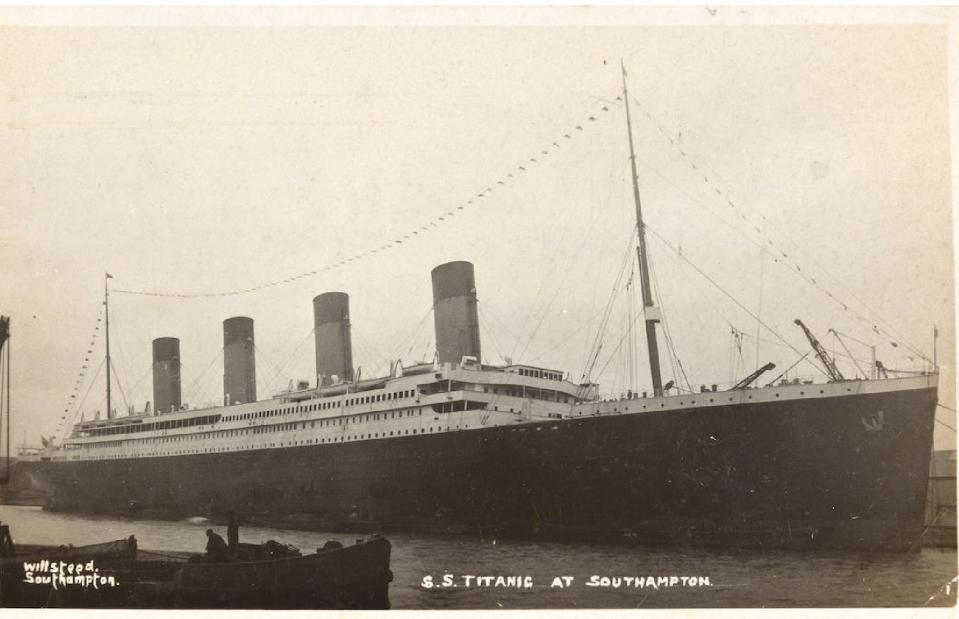
EMMANUEL DUNAND/Staff/Getty Images
Jack Phillips was a senior wireless operator on the Titanic’s maiden voyage, and he worked tirelessly to contact other vessels to try and enlist their help once it was clear the ship was sinking. Sadly, he was one of almost 700 members of the crew who lost their lives while working on board.
Phillips wrote this postcard to a Miss Elsie Phillips just six days before his death. It read: "Thanks very much for your letter. Having glorious weather, went to Cowes yesterday. Will write later before we sail. Love All Jack". The picture card sold for $20,000 (£12.5k) at a Bonhams auction in 2012.
Lifeboat biscuit: $23,200 (£15k)

Warut Chinsai/Shutterstock
One item that survived the Titanic in remarkably good shape was a single Spillers and Bakers Pilot cracker from a survival kit on one of the ship’s lifeboats.
Believed to be the world’s most expensive cracker, it was snapped up by a collector in Greece for £15,000 ($23.2k) in 2015.
Keys on a brass fob: $27,900 (£20k)
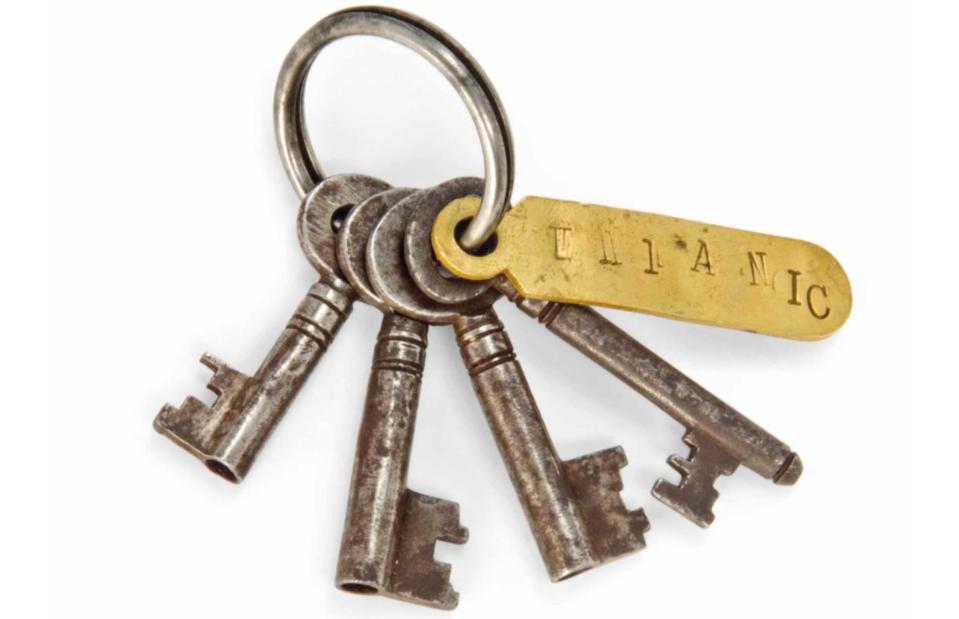
Courtesy Christies
These keys belonged to 43-year-old Samuel Ernest Hemming, who had been at sea since the tender age of 15 and was working as the Titanic’s resident lamp trimmer during its first voyage. On the night of the collision, Hemming was jolted awake by the noise of air escaping from the exhaust tank, but after reporting the noise, he decided to go back to bed. Just a few minutes later, the seafarer was told that he had just half an hour left to live.
Hemming assisted passengers into the limited number of lifeboats but didn’t hurry onto a boat himself, reportedly telling an officer: "Oh, plenty of time yet, Sir". When the ship finally sank, Hemming was thankfully plucked out of the icy water by lifeboat number four.
Third-class menu postcard: $44,650 (£23.2k)
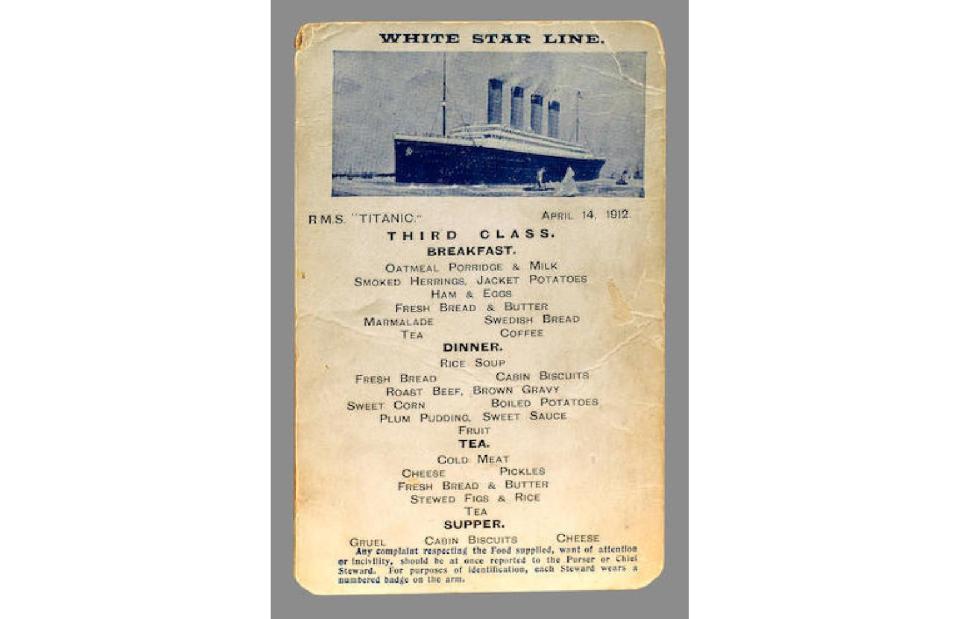
Courtesy Bonhams
Each day, menu postcards were made available to those on board, and this menu depicts what passengers in third class would have eaten the day before the Titanic sank. Tragically, this is likely the last meal that many of these people would have eaten, as around 75% of those living in the lowest quarters of the ship, mostly men, lost their lives in the disaster.
This postcard is the only one of its kind known to have survived, as it was stashed in the handbag of Sarah Roth, a third-class passenger who was able to leave the sinking ship in lifeboat C. It sold at a Bonhams auction for $44,650 (£23.2k) in 2005.
First class deck plan: $48,800 (£30k)

Heritage Images/Contributor/Getty Images
Upon boarding the RMS Titanic, the wealthiest 324 passengers were given a deck plan to help them navigate their way around the ship. The plan pictured belonged to the wealthy American couple Ida and Isidor Straus and is believed to be one of only three left in existence. Mr and Mrs Straus died side by side onboard the Titanic, as Ida refused a place on a lifeboat in order to stay with her husband.
At the time, Isidor was the owner of the Macy’s department store in New York. The couple’s maid Ellen Bird survived, and with her, the deck plan. Bird kept hold of the fragile document until her death in 1949, and in 2011, it sold at auction for £30,000 ($48.8k). The same buyer also bought a photo of Mr Straus for £17,000 ($27.7k).
Unused ticket: $56,250 (£35.3k)
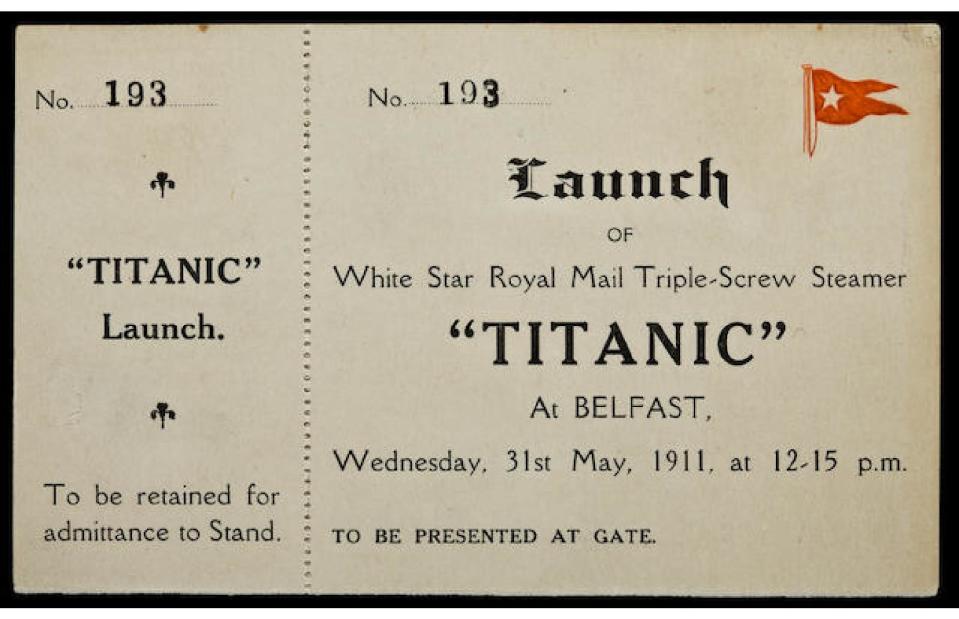
Courtesy Bonhams
The Titanic’s launch from shipbuilding company Harland & Wolff in Belfast was set to be such an exciting event that tickets were sold to spectators keen to watch the ship slide into the sea for the very first time.
This is the only fully intact, unused ticket known to still exist, and as a result, it sold for $56,250 (£35.3k) at New York auction house Bonhams in 2012.
Rescue boat medal: $61,870 (£45k)
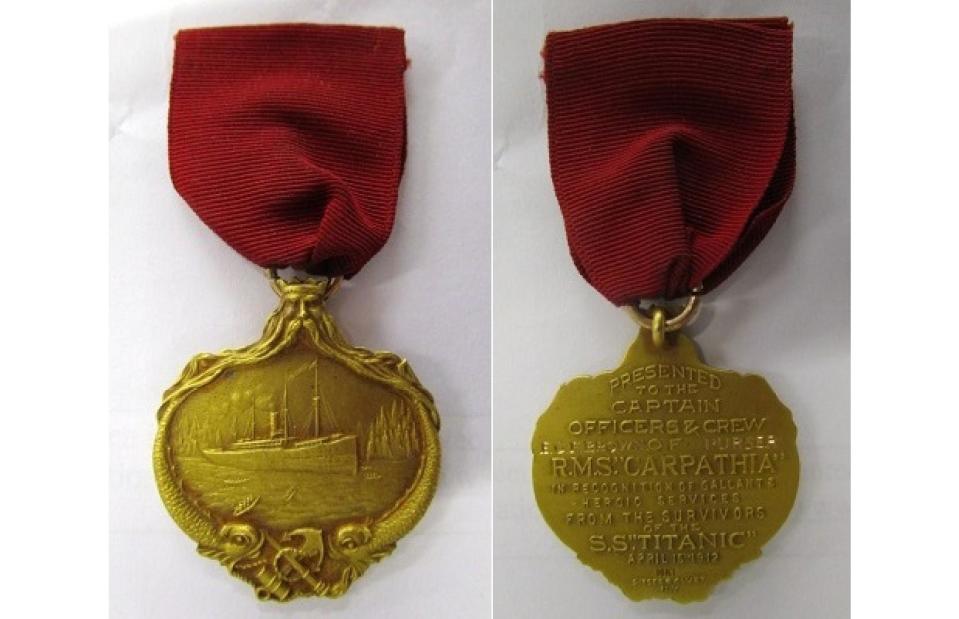
Courtesy Bourne End Auction Rooms
At approximately 12:20am on 15 April, RMS Carpathia received a distress call from the Titanic, and Captain Rostron ordered that the ship make its way to the sinking vessel and that space be made to bring survivors on board. Carpathia arrived at the site more than an hour after the Titanic had become fully submerged and managed to rescue an incredible 705 people from the surrounding lifeboats.
Rostron and other senior members of the crew received 14 gold medals for their remarkable efforts that night, presented by Mrs J. J. Brown, who had been a passenger on the Titanic and later became known as The Unsinkable Molly Brown due to her efforts to save others, urging those on her lifeboat to return to save passengers in the water. This is one of those medals, awarded to Ernest G. F. Brown, Carpathia’s purser, and it sold for £45,000 ($61.9k) through Bourne End Auction Rooms in England in 2018.
Walking stick: $62,500 (£47k)
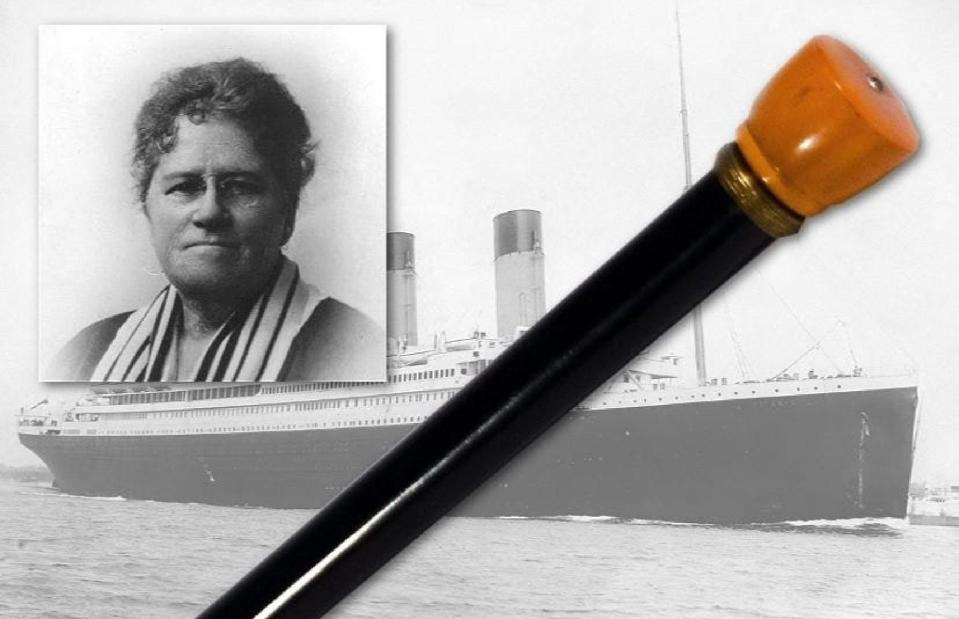
Courtesy liveauctioneers
First-class passenger Ella White had been travelling through Europe, with Cherbourg, France as her final stop before she hoped to sail back to New York on the Titanic. On her travels, she injured her foot, and so acquired a black enamelled cane, complete with a battery-illuminated crown, to help her walk.
On the fateful night of the ship’s collision, she was able to board lifeboat number eight and tried to use the stick’s light to attract the attention of rescue ships. Accounts show that White’s maid, along with other women on board, took over from the men who had been assigned as oarsmen due to the men’s "incompetency". The cane was passed down through generations of the White family, and it sold at auction for $62,500 (£47k) in 2019. However, that was much less than the $500,000 (£377k) estimate.
Unused lifejacket: $68,500 (£34.6k)
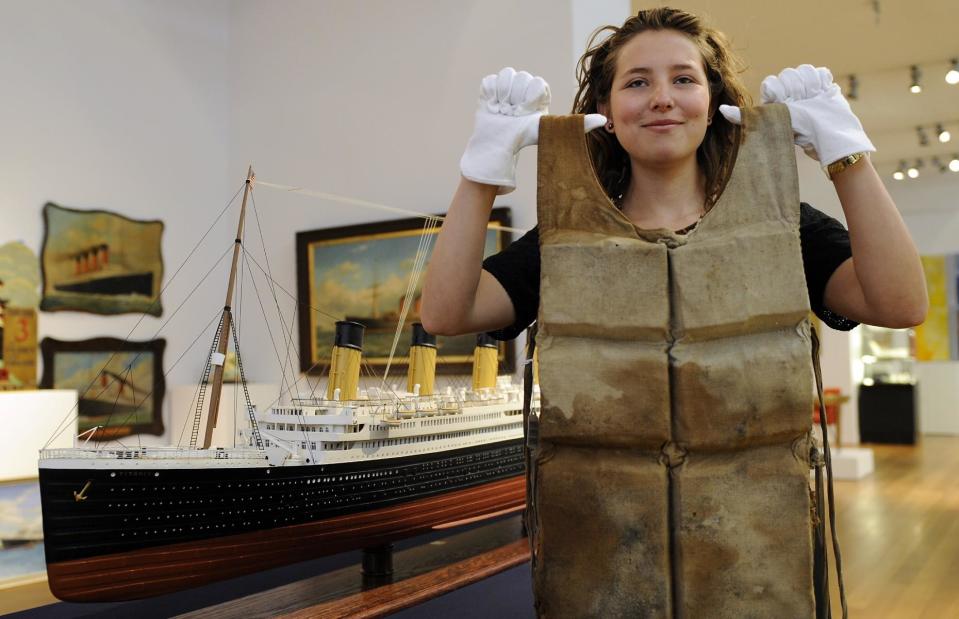
TIMOTHY A. CLARY/Staff/Getty Images
There were around 3,500 lifejackets onboard the Titanic, all stuffed with cork, as was typical of floatation devices at the time. The impractical filling was so solid that many survivors and victims of the disaster were found with broken jaws as a result of the impact of jumping into the water.
This jacket is believed to have been found by a farmer on the shoreline of Halifax, Nova Scotia in 1912 and appeared to be unused as the shoulder straps were still in place. One of just six known to exist, it sold for $68,500 (£34.6k) at auction in 2008.
Bronze lifeboat nameplates: up to $70,000 (£40k) each
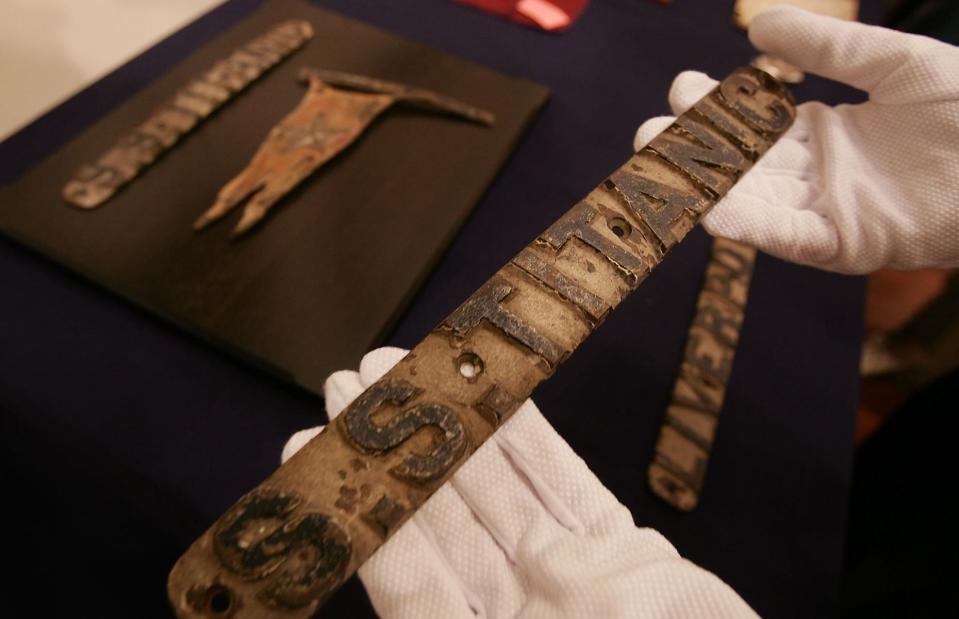
Spencer Platt/Staff/Getty Images
The RMS Titanic had a fatal shortage of lifeboats on board. Despite having capacity for 48 vessels, the White Star Line shipping company decided that only 20 boats would be installed in order to cut costs and prevent decks from being too crowded.
The lifeboats that did make it onto the ship carried bronze nameplates that read "S.S. Titanic". Several of these plates went up for auction at Christie’s auction house in 2006, and they were each given an estimated value of between $40,000 and $70,000 (£22.8k-£40k).
Poster for Titanic’s return voyage: $85,200 (£62k)
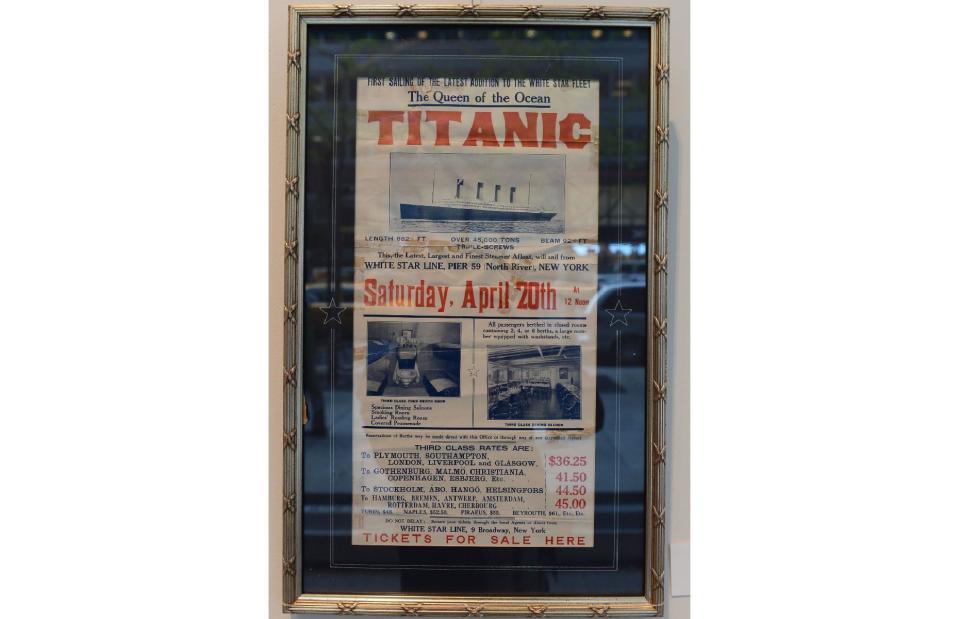
EMMANUEL DUNAND/Staff/Getty Images
The Titanic’s maiden voyage was due to start in Southampton and stop off at Cherbourg, France and Queenstown, Ireland before reaching New York. The journey was scheduled to be a return trip that would also see passengers board in the United States and disembark in France or England.
Of course, the ill-fated ship never made it to New York, but posters advertising the return journey across the Atlantic were plastered all over the Big Apple. Most of the advertisements were destroyed once the Titanic sank, but a few still exist, and they are extremely valuable. One creased but intact copy sold at British auction house Henry Aldridge and Son for £62,000 ($85.2k) in 2018.
Rescue mission sextant: $92,200 (£66k)
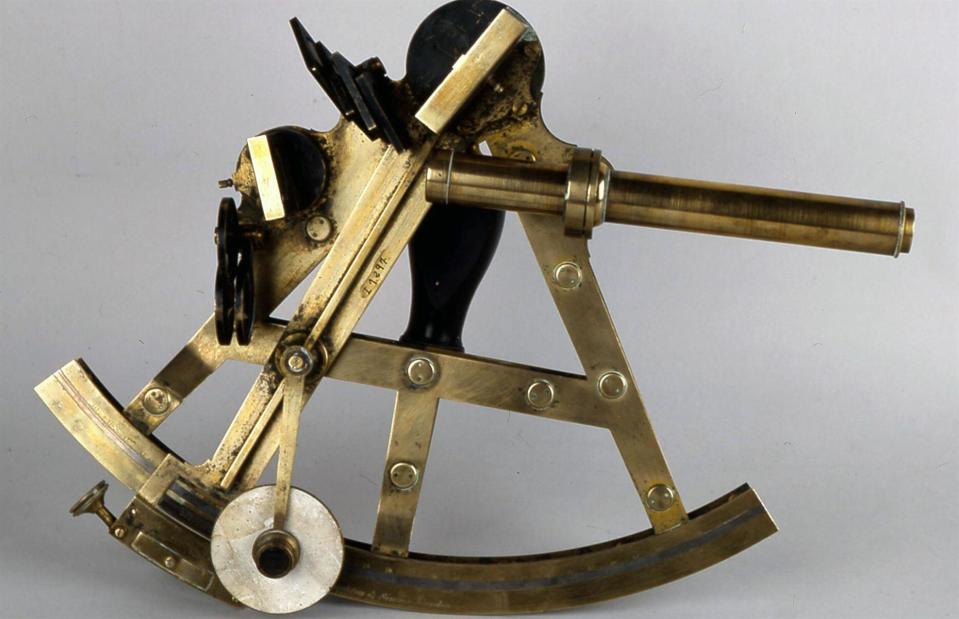
EU/BT / Alamy Stock Photo
Sextants were crucial navigation instruments before ships were kitted out with the sophisticated GPS technology used today, and one belonging to RMS Carpathia captain Sir Arthur Rostron played a pivotal role in locating the Titanic following its urgent distress call.
After the success of the rescue mission, Rostron’s sextant was passed through the captain’s family for the next 104 years, until it was put up for auction in 2016. The Edwardian seafaring essential, which was similar to the one pictured, sold for £66,000 ($92.2k).
Deck log for C.S. MacKay-Bennett: $102,000 (£52k)
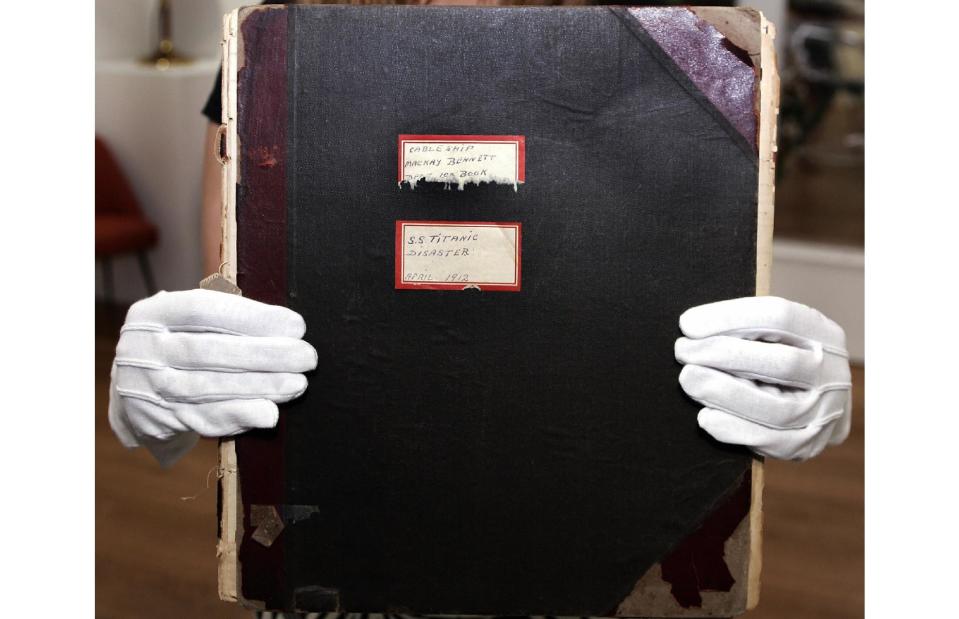
TIMOTHY A. CLARY/Staff/Getty Images
C.S. MacKay-Bennett was the first of four ships chartered by the White Star Line, the Titanic’s parent company, to look for bodies following the ship’s calamitous collision. Arriving on 17 April 1912, the recovery ship’s crew quickly realised that reinforcements would be needed to gather the huge number of bodies at the wreckage site.
This ledger logged the period preceding the disaster in great detail, as well as the intricacies of the recovery mission itself. In 2007, the document was put up for auction with an estimate of between $30,000 and $50,000 (£15.3k-£24.5k) – it actually sold for an incredible $102,000 (£52k).
Blanket from the lifeboats: $117,000 (£96k)
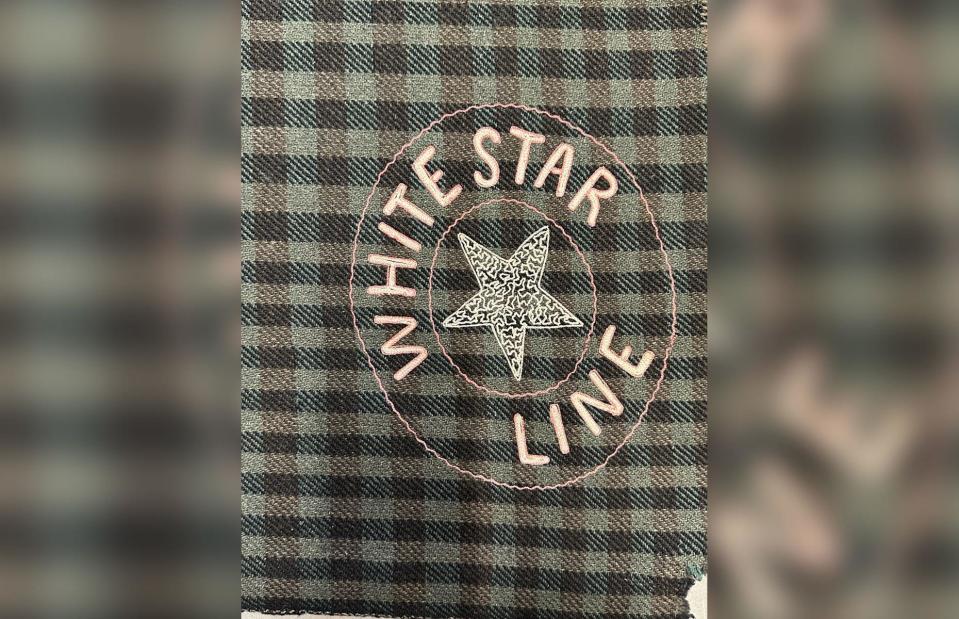
Courtesy Henry Aldridge and Son Ltd
The same auction at Henry Aldridge and Son Ltd offered what the lot listing describes as "one of the rarest three-dimensional objects we have seen": a tartan blanket for first-class passengers that was recovered from a lifeboat. The blanket later sailed to New York onboard the RMS Carpathia, the rescue boat which carried Titanic survivors to shore, and was appropriated by White Star Assistant General Manager Frederick Toppin.
Toppin was based in New York and wasn't on the Titanic at the time of the disaster, but he met surviving passengers on the pier when the Carpathia docked and reportedly "shed many a tear" over the sinking in the years that followed.
Embroidered with the White Star Line logo, the remarkable blanket went under the hammer for £93,000 ($117k).
Final first-class menu: $118,750 (£76.9k)
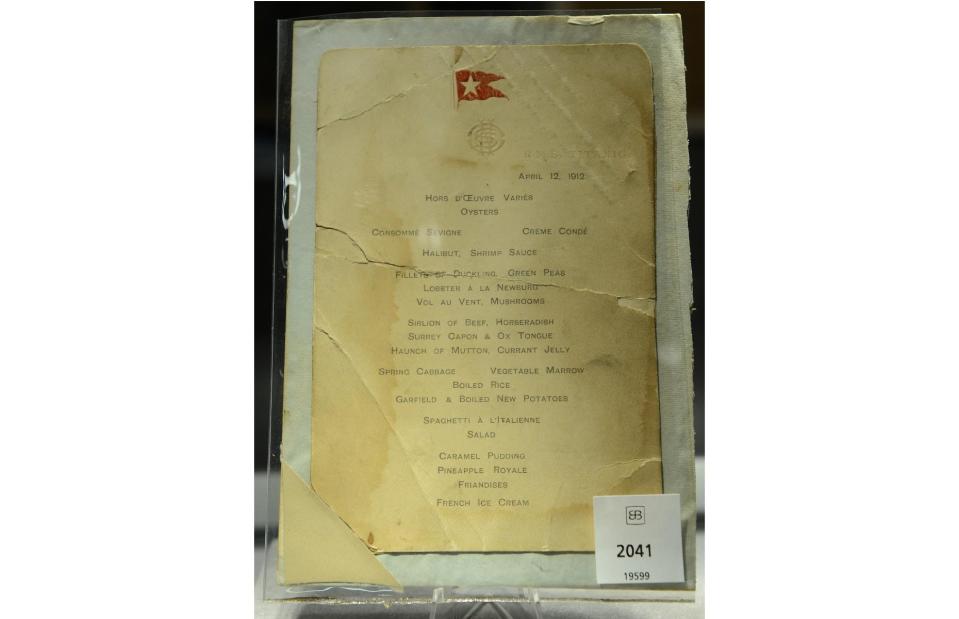
EMMANUEL DUNAND/Staff/Getty Images
There's an undeniable fascination surrounding the diets of those who sailed on the Titanic, particularly when it comes to the dining habits of the ship’s highest-ranking passengers. The first-class menu pictured details the supper courses on 12 April, including halibut in a shrimp sauce, beef sirloin, ox tongue, and a caramel pudding, and sold for $31,250 (£19.6k) at a Bonhams auction in 2012.
But it's not the priciest example. In 2015, a menu featuring the last dinner served to first-class passengers travelling on the Titanic before it sank sold for an incredible $118,750 (£76.9k) at an auction in Texas.
RMS Carpathia rescue report: up to $120,000 (£75.5k)
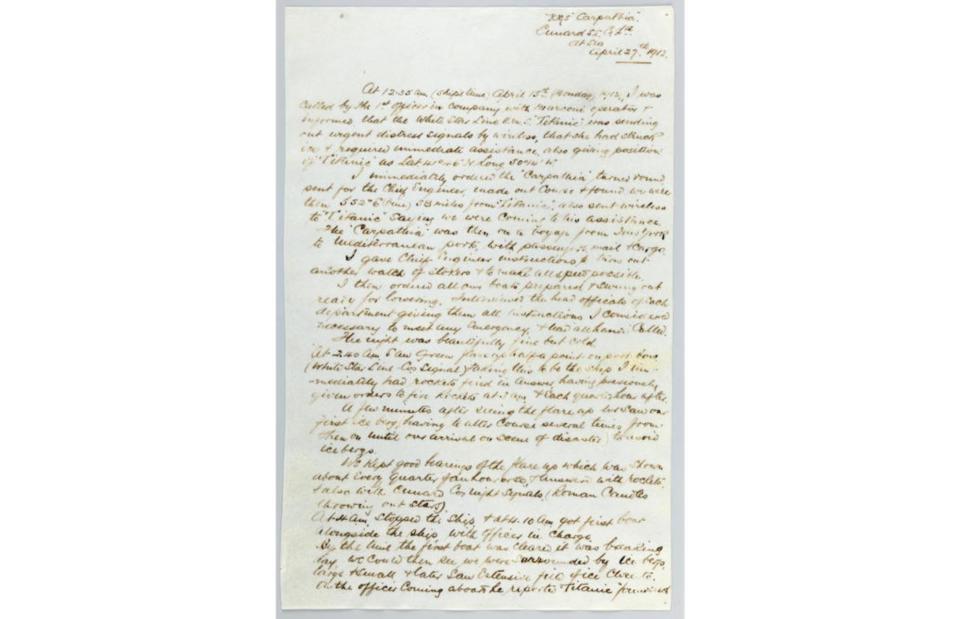
Courtesy Bonhams
This is another artefact linked to the captain of the RMS Carpathia, which hastened to the sinking Titanic to assist in rescue efforts. Captain Rostron was required to write a report on the disaster and explain how his ship had sailed to the Titanic’s aid, and the intricate account is still legible today, serving as one of the most reliable and detailed eyewitness accounts of the events of that doomed April night.
The two-page manuscript went up for auction in 2012 and was valued at between $90,000 and $120,000 (£56.4k-£75.5k).
Victim’s pocket watch: $119,000 (£97k)
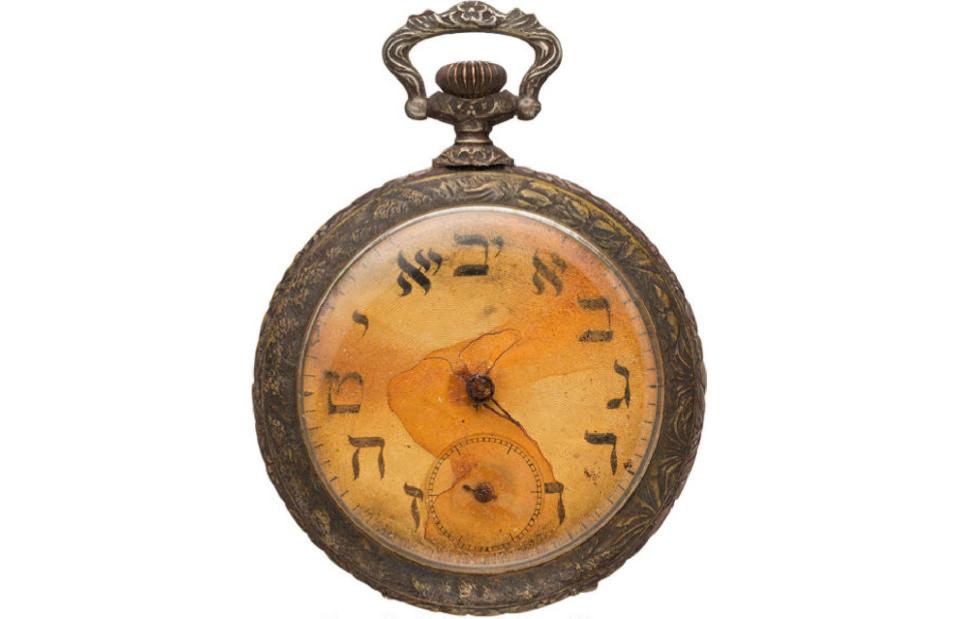
Courtesy Heritage Auctions
Women and children were given priority in the scramble to board lifeboats in the early hours of 15 April, which separated hundreds of couples and families. This pocket watch was found with Russian passenger Sinai Kantor, who tragically died in the icy waters after successfully helping his wife Miriam onto lifeboat number 12.
The couple had purchased two second-class tickets for the voyage to New York at a cost of around £26, which is equivalent to just over £2,450 ($3k) today. The watch was put up for auction by Heritage Auctions in 2018, and the winning bid of $57,500 (£41.8k) was made by John Miottel, who collects timepieces linked to the catastrophe.
The watch went up for auction again on 11 November 2023, smashing its previous record and selling for £97,000 ($119k) at London auction house Henry Aldridge and Son Ltd – part of the same auction that also featured the first-class menu from 11 April 1912 and the embroidered blanket.
Deckchair: $154,000 (£100k)

PA Images / Alamy Stock Photo
Furniture branded with the White Star Line emblem has become popular among those who collect Titanic memorabilia. In 2001, Chris Lowe from Swindon, England spent £30,000 ($43.5k) on this mahogany deckchair. It's believed to be one of around 50 thrown overboard as crew members dumped furniture in the hope it would help the ship stay afloat.
This was far from the most valuable of the discarded pieces, though, and in 2015, a deckchair found floating on the surface of the Atlantic sold for just over £100,000 ($154k) in Wiltshire, England. The chair had been collected by the crew on the Mackay-Bennett rescue ship as they were recovering the bodies of victims in the aftermath of the crisis.
A letter on Titanic paper: $155,000 (£126k)
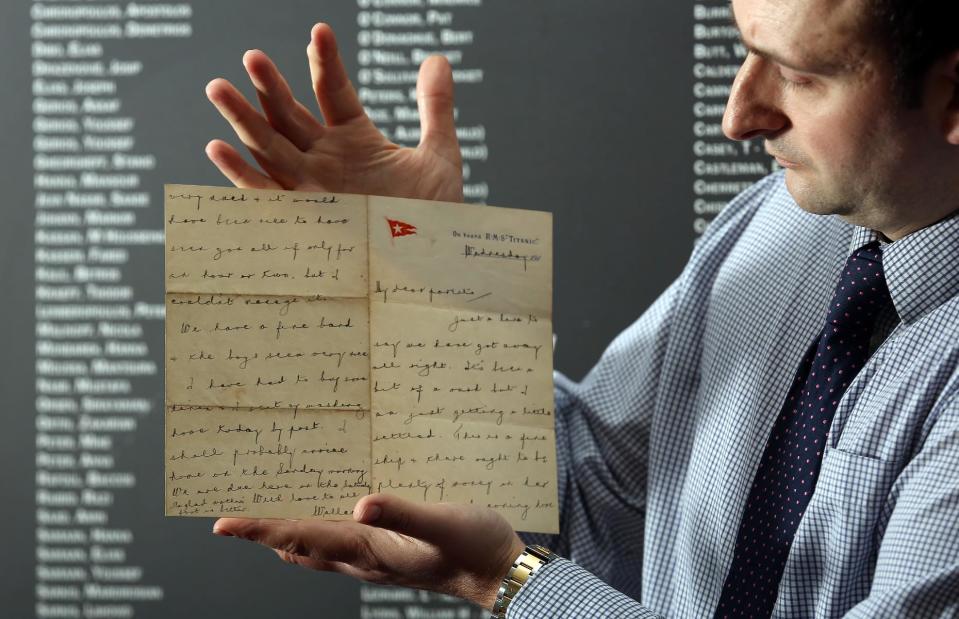
Matt Cardy/Stringer/Getty Images
Correspondence documenting the experiences of passengers travelling on the Titanic are highly coveted collectables and museum pieces. The most highly-prized letter (pictured) was written by American businessman Oscar Holverson. It's the only known letter written on headed Titanic notepaper to have gone into the Atlantic and survived the shipwreck.
The letter was dated 11 April, just one day before the disaster, and in it, Holverson describes the Titanic as "giant in size and fitted up like a palatial hotel". The document had a reserve bid of up to £80,000 ($98k) but broke records when it sold for £126,000 ($155k) in 2017.
Keys to the Crow’s Nest: $176,700 (£90k)
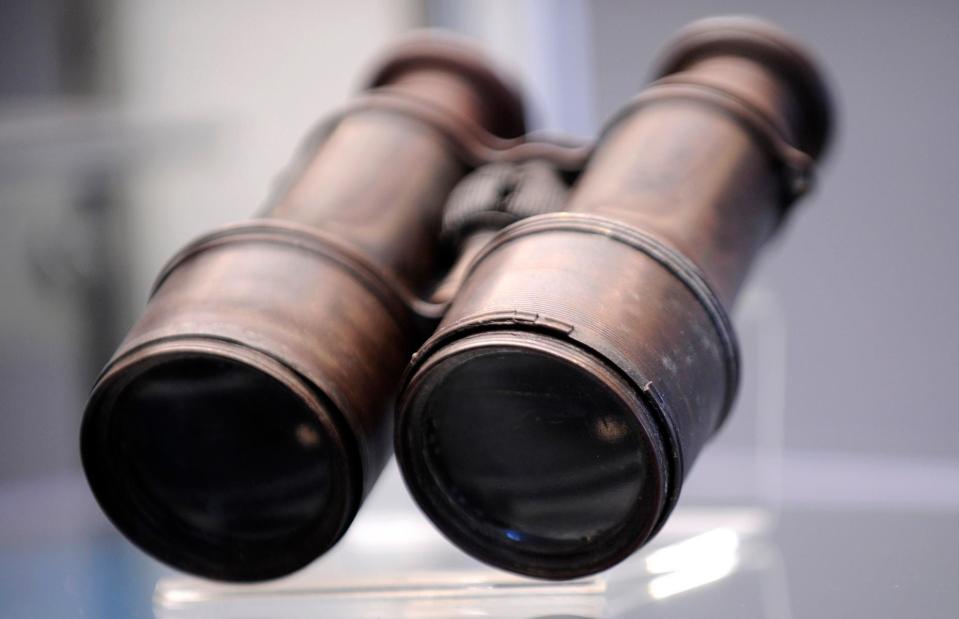
UPI / Alamy Stock Photo
A multitude of factors contributed to the enormity of the Titanic disaster, including a lack of binoculars. When the Titanic set sail on its maiden voyage, one very important key remained on land, and that was the key labelled "Crows Nest Telephone Titanic".
That key alone opened the binocular store, but the officer responsible for it forgot to hand it over to his replacement when he left the ship in Southampton. As a result, the Titanic’s watchmen had to rely on the naked eye, which some believe at least partially accounts for the vessel’s disastrous collision with an iceberg. The missing key went up for sale in 2007 and sold for £90,000 ($176.7k).
Steward’s pocket watch: $197,000 (£90.5k)
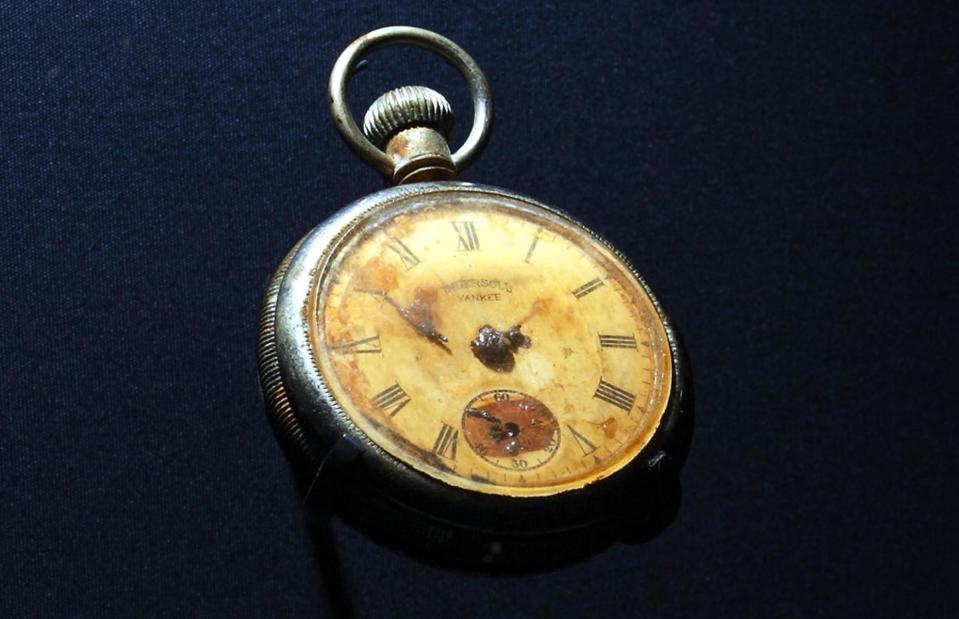
AFP/Stringer/Getty Images
Edmund Stone was a bedroom steward on the E deck of the Titanic and would have contributed to the mammoth task of evacuating passengers and assisting them with their lifejackets on the night of the collision. Like many members of the crew, Stone himself was not rescued from the shipwreck. His time of death is known more precisely than most, though, thanks to a pocket watch he had on him on that fateful night, which was similar in style and condition to the example pictured.
The watch stopped ticking at 2:16 a.m., indicating when he would have landed in the freezing waters. The timepiece eventually sold for €130,000 ($197k/£90.5k) in 2008.
Ship’s plan: $358,000 (£220k)
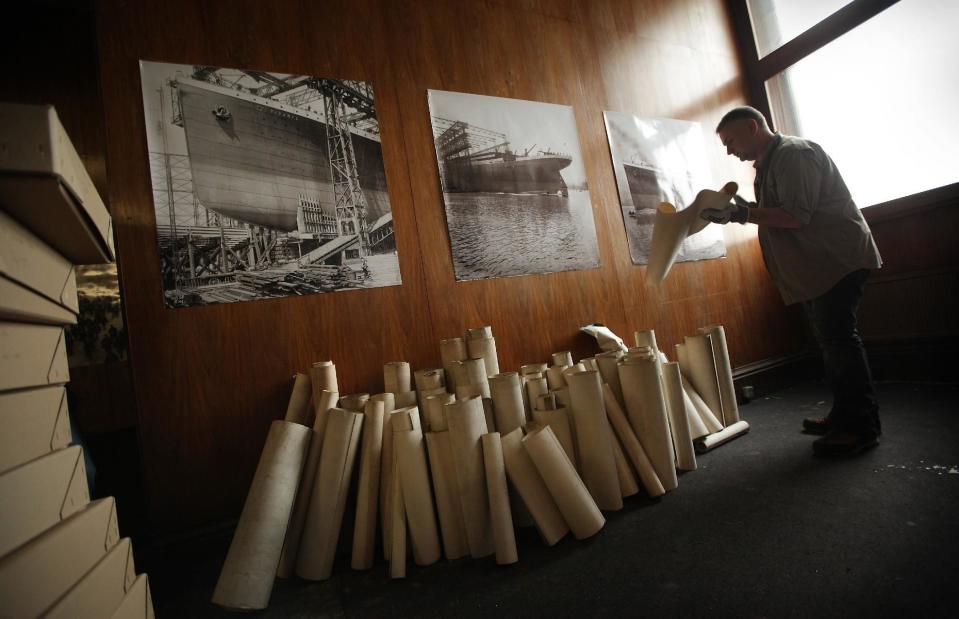
Peter Macdiarmid/Staff/Getty Images
The Titanic’s collision and the resulting loss of life warranted an extensive inquiry into what caused the disaster. Included in that inquiry was a 33-foot (10m) cross-section of the ship, hand-drawn by White Star Line architects. Witnesses used the drawing to indicate parts of the vessel as they were making their statements. Commissioned by the British Board of Trade, the plan was an integral part of the 36-day inquiry. When it came up for auction in 2011, it was expected to fetch between £100,000 and £150,000 ($162k-$244k), but it went on to sell for £220,000 ($358k).
The plan, which has been described as "one of the most important and well-documented pieces of Titanic memorabilia in existence today", went under the hammer once again in April 2023 but fetched a more modest sum of $243,000 (£195k).
Violin playing as the Titanic sank: $1.4 million (£900k)

PETER MUHLY/Stringer/Getty Images
Distress mounted among passengers and crew as the Titanic plunged deeper and deeper into the icy waters, and so classical musician Wallace Hartley and his band decided to play music to calm those on board. Hartley eventually went down with the ship, wearing a lifejacket and with his beloved violin strapped to his body.
Incredibly, the instrument was later recovered from the water and returned to his fiancée, Maria Robinson. The iconic instrument became the most expensive piece of Titanic memorabilia ever sold in 2013 when it fetched an astonishing £900,000 ($1.4m) at auction, a record it held for 10 years. Bidding lasted just 10 minutes.
John Jacob Astor's gold pocket watch: $1.5 million (£1.2m)
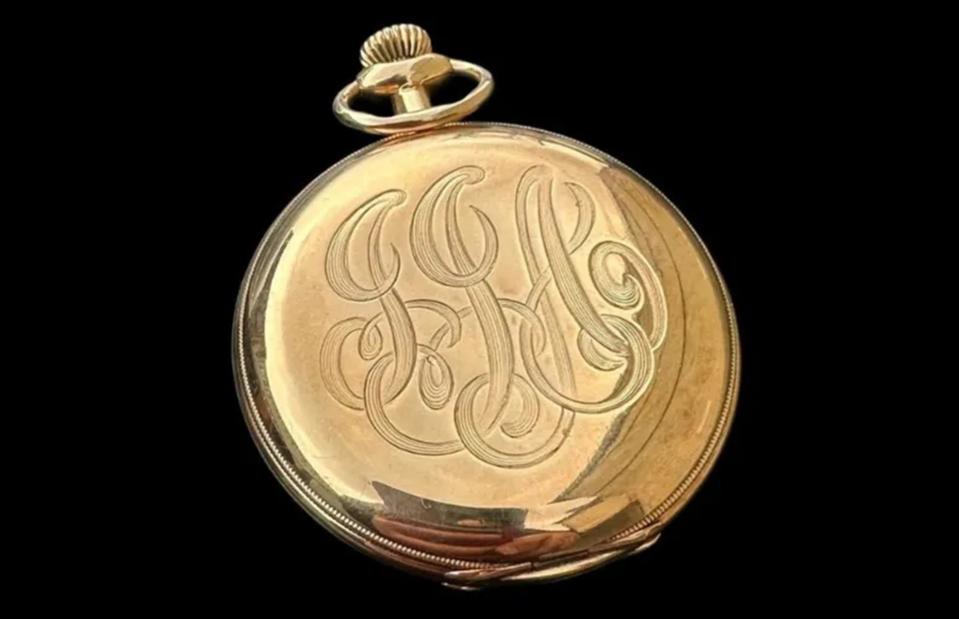
Courtesy Henry Aldridge and Son Ltd
The wealthiest passenger onboard the Titanic was John Jacob Astor. One of the world's richest men in 1912, Astor perished in the tragedy after making sure his new wife Madeleine – who was 18 years old and pregnant – had gotten into a lifeboat. His body was recovered from the waves a week later, along with his 14-carat gold Waltham pocket watch, which was engraved with his initials.
The watch went up for auction at British auctioneers Henry Aldridge and Son Ltd on 27 April with an estimate of £100,000 to £150,000 ($125k-$188k). Not only did it smash this estimate, it also broke records. With a final sale price of £1.2 million ($1.5m) inclusive of fees, the watch has become the most expensive single item of Titanic memorabilia to sell at auction, overtaking the haunting Titanic violin.
Collective value of recovered jewels: $200 million (£160m)
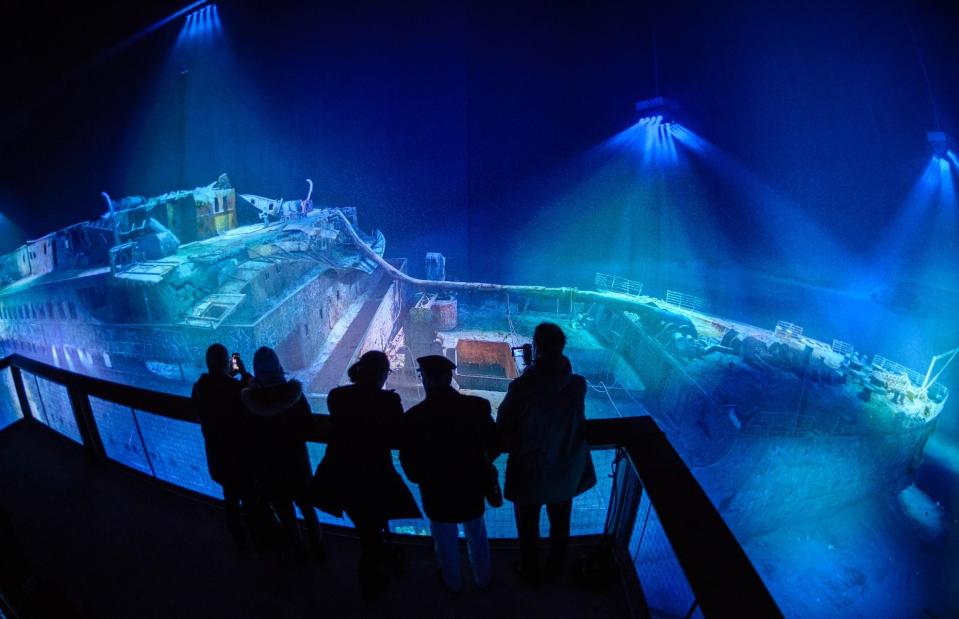
Jens Schlueter/Stringer/Getty Images
One of the largest and most luxurious ships in the world, the Titanic attracted some incredibly affluent passengers, and when the vessel sank, so did swathes of their riches. Recovery operations have produced an abundance of precious treasures that were abandoned as the ship began to collapse, including one particularly valuable trinket.
In 1987, just two years after the remains of the Titanic were first found, a diamond bracelet engraved with the name "Amy" was brought to the surface. It’s assumed that the accessory belonged to one of two women named Amy who had been on board.
Today, it's rumoured that all the astonishing jewels recovered from the Titanic wreckage have a combined value of $200 million (£160m).

 Yahoo Finance
Yahoo Finance 